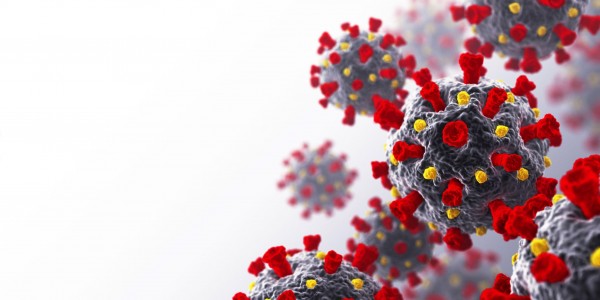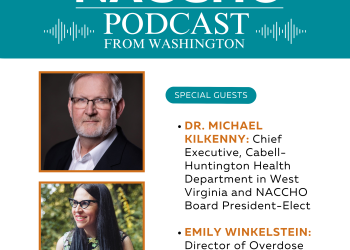The challenge for local public health is determining if the strain is present in our community to inform efforts of infection prevention and control.
New variants of the virus SARS-CoV-2 have increasingly become one of the top concerns, as efforts to prevent the spread of the disease continue across the world. Both health officials and the public alike have many questions about what challenges new variants might bring to the ongoing pandemic response. The term coronavirus is sometimes used as though it is synonymous with COVID-19, the disease caused by SARS-CoV-2 but coronaviruses are a family of viruses named for the “crown” of spikes on their surface that are used to bind to cells and infect them. Viruses are constantly changing and sometimes those changes are significant enough to shift the way they infect.
Changes to those spikes cause the virus to bind and infect human and animal cells with variable success, which is why these are being monitored by scientists. Changes to other parts of the virus could affect the severity of disease or when symptoms might occur. These new Variants of Concern (VOC) are mutated versions of SARS-CoV-2 that have allowed the virus to spread with higher efficiency. All three of the VOC listed by the Centers for Disease Control and Prevention (CDC) have mutations in the spike protein that allow it to infect more easily. What is not known at this time is exactly where these VOC have spread, whether they make COVID-19 more or less severe, or how they affect therapies, vaccines, and tests.
Here’s what has been seen so far from each VOC currently being reported on by the CDC:
- B.1.1.7 lineage (a.k.a. 20I/501Y.V1 Variant of Concern (VOC) 202012/01)
- This variant was first identified in the United Kingdom in September 2020.
- With 46 jurisdictions (states, territories, and the District of Columbia) tracking, there are 2400 reported cases in the US. *
- This variant has a mutation in the spike protein as well as several others.
- It has been associated with more efficient and rapid transmission and increased risk of death compared with other variants.
- So far there is no evidence to suggest B.1.1.7 has an impact on the severity of COVID-19 or vaccine efficacy.
- B1.351 lineage (a.k.a. 20H/501Y.V2)
- This variant was first identified in Nelson Mandela Bay, South Africa in samples from October 2020.
- There are 53 cases reported by 16 jurisdictions so far in the United States. *
- There are multiple mutations in the spike protein.
- There is some evidence indicating that one of these may affect how well antibodies (the immune system’s protection via vaccination or previous infection) are able to respond to infection.
- Disease severity seems to be unaffected.
- P.1 lineage (a.k.a. 20J/501Y.V3)
- This variant was first identified in travelers from Brazil.
- There are 10 reported cases from 5 jurisdictions in the US. *
- It contains three mutations in the spike protein.
- There is evidence to suggest that some of the mutations may affect the ability of antibodies to recognize and respond to the virus.
- It has been associated with more efficient and rapid transmission and increased risk of re-infection of individual.
* As of March 2, 2021, 3 PM ET according to the CDC’s National Center for Immunization and Respiratory Diseases (NCIRD), Division of Viral Diseases
Local health departments (LHDs) have been on the frontlines of the COVID-19 pandemic in communities across the United States and the new variants have brought questions regarding the presence of new variants in their communities and what LHDs should be doing in response. To find out how an impacted county was handling these VOC, NACCHO spoke with Dawn Terashita, MD, MPH, FACPM , the Associate Director of the Acute Communicable Disease Control Program at Los Angeles County Department of Public Health. (These responses were provided February 11, 2021, therefore rates, protocols, and other information may have changed.)
From what you have seen how are cases of variant strains of COVID being reported to your health department?
Los Angeles County (LAC) Department of Public Health (DPH) is notified of COVID variant strains identified in Los Angeles County residents or individuals with exposure to our county. We receive reports through a variety of different mechanisms including:
- Public health partners such as CDC, the California Department of Public Health, and other health jurisdictions that might identify a variant.
- Hospital laboratories, reference laboratories, researchers or other public partners.
- LAC Public Health Laboratory which has been sequencing since the summer of 2020.
Has your health department used any particular messaging to address IPC specific to new variants?
LACDPH uses our Health Alert Network (LAHAN) to quickly disseminate information to healthcare providers. The latest LAHAN regarding the COVID variant can be found here. We refer to the CDC for specific infection prevention and control guidance.
Have you changed any of your operations or handled these cases any differently than other COVID cases?
At this time, we have reported 8 UK B.1.1.7 variant cases. We conduct a special interview where we notify the case that the variant strain has been identified, ask additional questions to our routine COVID interview including travel-related exposure questions and assessment of contacts. We have not identified other variants of concern (e.g. South Africa B.1.351, Brazil P.1 and P.2); however, if we did, we would proceed similarly. Regarding the CAL.20C variant, which is prevalent in LAC, we have not handled these cases differently than other COVID cases.
What other challenges or questions do you have regarding new COVID variants?
The most common questions are about the characteristics of the variant virus strain. For example, it is more infectious or more severe? Does that vaccine protect against the variant? We are still learning about the variants and refer to current literature and guidance. The challenge for local public health is determining if the strain is present in our community to inform efforts of infection prevention and control.
As research continues to be collected globally and reporting to local health departments is unpredictable, the only certain way forward for many health officials is to utilize the attention on the new variants to keep communities vigilant in infection prevention methods like distancing and masking.
The questions and challenges that Los Angeles County Health Department have are comparable to those being expressed by many across the country, however clear answers are still unable to be declared by the research community as the new variants are being studied. From initial findings shared by the CDC, associations can be made between these new strains and higher rates of infection in communities. In some instances, cases of a variant of SARS-CoV-2 will not be directly reported to the LHD. The CDC publicly publishes numbers of new variant cases by state and variant. The map can be found here.
The CDC is continuously updating guidance regarding masks, including a recent change to layer a cloth mask or a mask fitter over a disposable mask to provide more protection by adding layers and reducing the risk of leaking around the edges. Stay up to date on the most recent guidance through the CDC’s website.
For more information on NACCHO’s COVID-19 response check out our response webpage.



